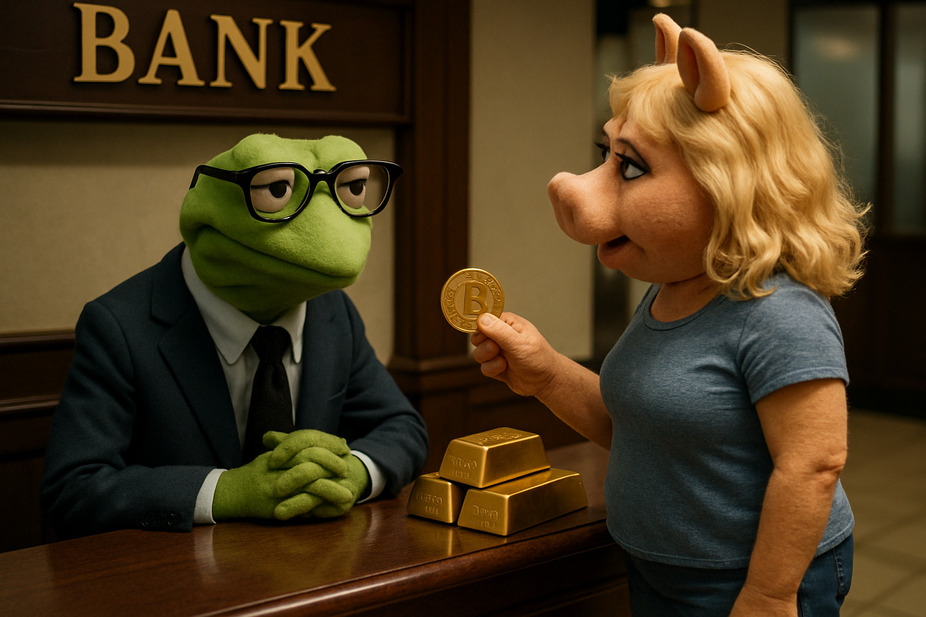Navigating uncertainty: financial reset, crisis, or something in between?

As the global financial system faces increasing challenges, are we on the cusp of a reset, bracing for another crisis, or charting a course toward something entirely new?
The world’s financial landscape has been increasingly disrupted by unexpected and hard-to-predict events, shaking its very foundations. Traditional methods of support are losing their effectiveness, and whispers of another global crisis are growing louder.
In this environment, the adoption of technological innovations by traditional finance (TradFi), such as digital currencies, tokenized assets, and blockchain platforms, seems like a natural step. However, there’s also a quiet resurgence of interest in traditional instruments, most notably the monetization of gold.
The U.S. Federal Reserve (Fed) recently released a note examining international experiences with revaluing gold reserves. The note pointed out that several countries have undertaken this action in the past 30 years. According to the Fed’s analysis, if the U.S. were to revalue its substantial gold reserves, it could generate approximately 3% of its GDP—around $900 billion—without actually selling any gold. But how is this possible, and what implications could it have for the cryptocurrency market?
Unlocking hidden value: what is gold monetization?
Gold monetization offers a way for a country to transform its gold reserves into readily available funds without selling the precious metal. Instead of selling bullion outright, the government simply revalues it.
Currently, U.S. gold reserves are valued at a historical rate of $42 per ounce, dating back to a 1973 standard, even though its actual market value is significantly higher, exceeding $3,300 per ounce.
By revaluing gold, the Treasury could issue gold certificates, transferring them to the Fed, which in turn would credit the Treasury’s account with dollars. While this creates money “out of thin air,” it is technically backed by gold. This approach also allows the government to reduce its debt and buy back Treasury bonds, avoiding the need to take on new debt.
This isn’t unprecedented. In 1933, President Franklin Roosevelt famously confiscated gold from the public and subsequently raised its price, effectively devaluing the dollar and providing the Treasury with substantial profits. Similarly, in 1971, President Richard Nixon severed the dollar’s peg to gold and raised its official price, enabling the Treasury to replenish its budget. However, these actions eroded confidence in the dollar.
The Fed’s note highlights that other countries have tried similar measures, but they haven’t necessarily solved underlying structural problems. In Lebanon, debt continued to rise despite some debt repayment through revaluation, and in South Africa, the effects are still uncertain. Germany’s decision to revalue gold sparked controversy regarding the appropriateness of such interference with the central bank’s operations.
Deja vu? History repeating itself?
In February 2025, the Financial Times reported that discussions about gold monetization were occurring at a high level. According to macro strategist Luke Gromen, revaluing gold to $20,000 per ounce could potentially generate up to $5 trillion, reducing the government’s debt-to-GDP ratio significantly.
Gromen noted that this option is “directly prescribed in the Fed’s documents,” referencing the authorization for the Secretary of the Treasury to issue gold certificates for monetizing acquired gold.
Speculation was further fueled by Treasury Secretary Scott Bessent, who stated that the government intended to “monetize some of the assets on the U.S. balance sheet for the American people.” Investor George Gammon also highlighted this possibility, suggesting that macroeconomic instability and government policies are increasing the likelihood of revaluing gold to market levels.
While some experts, like former U.S. Treasury Secretary Robert Rubin, believe that tax increases are the only real solution to the debt problem, the Fed’s note suggests that revaluing gold is now being seriously considered by financial institutions. Notably, some supporters of manipulating gold certificates also support the cryptocurrency industry.
What role will Bitcoin play?
Cynthia Lummis proposed creating a strategic reserve of Bitcoin using the profits generated from revaluing gold certificates in the “Bitcoin Act of 2024.”
This idea received support from individuals within Trump’s circle, who suggested that capturing the difference between the old and new gold certificate prices would be the best way to create a Bitcoin reserve in a budget-neutral manner.
Lummis’s initiative demonstrates that gold monetization is being considered not only as an emergency budget measure but also as a potential source of funding for strategic assets. This points towards a possible transformation of state reserves.
However, while gold monetization might improve budget performance, it also carries significant risks, including accelerating inflation, eroding confidence in the dollar, causing capital outflows, and preserving systemic imbalances like chronic deficits and growing public debt.
For the cryptocurrency market, this shift could act as a powerful catalyst. In the face of fiat currency depreciation, investors are likely to seek alternative assets. If confidence in the dollar and bonds weakens, Bitcoin might be perceived as a new reserve asset alongside gold, furthering the trend of de-dollarization, particularly in countries with vulnerable national currencies.
However, there’s a hidden risk: the emergence of large players—institutional investors and states—could transform Bitcoin from an independent, decentralized asset into a tool of control, leading to increased regulatory pressure, restrictions on freedom of circulation, and dependence on political decisions.
As a result, Bitcoin, instead of becoming a decentralized alternative to the global financial system, risks being integrated into it, with all the associated restrictions.












